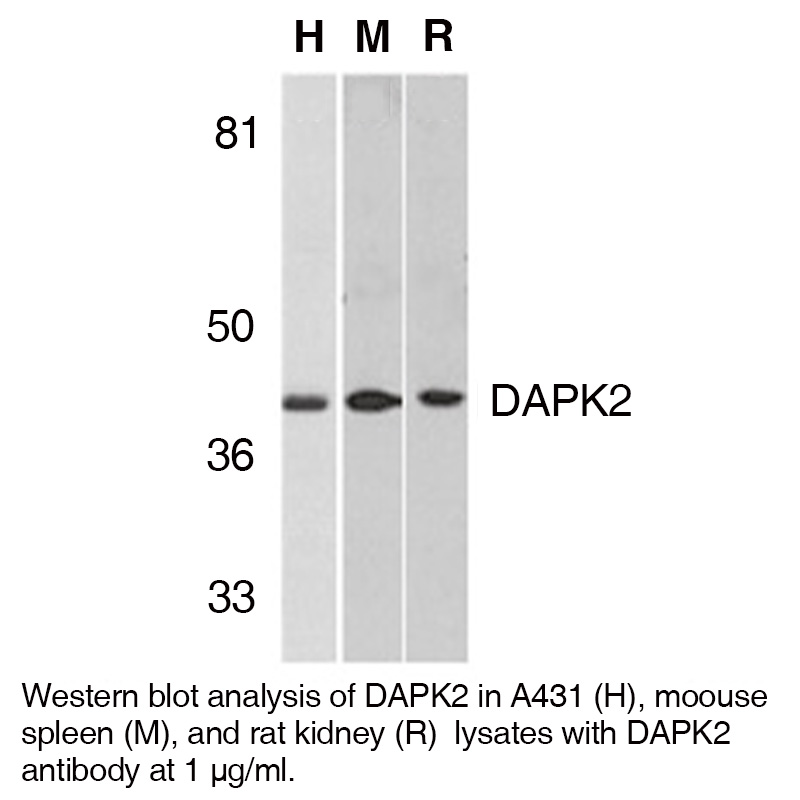Anti-Human DAPK2
| Code | Size | Price |
|---|
| LEI-D256-20ug | 20 ug | £221.00 |
Quantity:
| LEI-D256-0.1mg | 0.1 mg | £574.00 |
Quantity:
Prices exclude any Taxes / VAT
Overview
Host Type: Rabbit
Antibody Clonality: Polyclonal
Regulatory Status: RUO
Target Species: Human
Applications:
- Immunohistochemistry- Paraffin Embedded (IHC-P)
- Western Blot (WB)
Shipping:
Ambient
Storage:
This polyclonal antibody is stable for at least one week when stored at 2-8°C. For long term storage aliquot in working volumes without diluting and store at -20°C in a manual defrost freezer. Avoid Repeated Freeze Thaw Cycles.
Images
Further Information
Concentration:
0.5 mg/ml
Conjugate/Tag/Label:
Purified No Carrier Protein
Format:
This polyclonal antibody is formulated in phosphate buffered saline (PBS) pH 7.4 containing 0.02% sodium azide as a preservative.
Formulation:
This polyclonal antibody is formulated in phosphate buffered saline (PBS) pH 7.4 containing 0.02% sodium azide as a preservative.
Immunogen:
PN:D261
Long Description:
Apoptosis is mediated by death domain containing adapter molecules and a caspase family of proteases. Certain serine/threonine protein kinases, such as RIP and DAP kinase, are mediators of apoptosis. DAP kinase (DAPK) is pro-apoptotic calcium-regulated serine/threonine kinase containing death domain. Ectopic expression of DAPK induces cell death and suppresses oncogenic transformation. DAPK mediates IFNg induced apoptosis. A novel DAP kinase-related protein was recently identified and designated DAPK2 and DRP-1.1,2 Ectopicly expressed DAPK2 induced apoptosis in various types of cells.1,2 DAPK has high sequence homology to ZIP kinase and DRAK1/2, and they represent a novel family of serine/threonine kinases, which mediates apoptosis through their catalytic activities. The messenger RNA of DAPK2 is expressed in multiple human tissues.1
Target:
DAPK2
References
1. Kawai, T. et al. (1999) Oncogene 18(23):3471-80 2. Inbal, B. et al. (2000) Mol Cell Biol 20(3):1044-54



